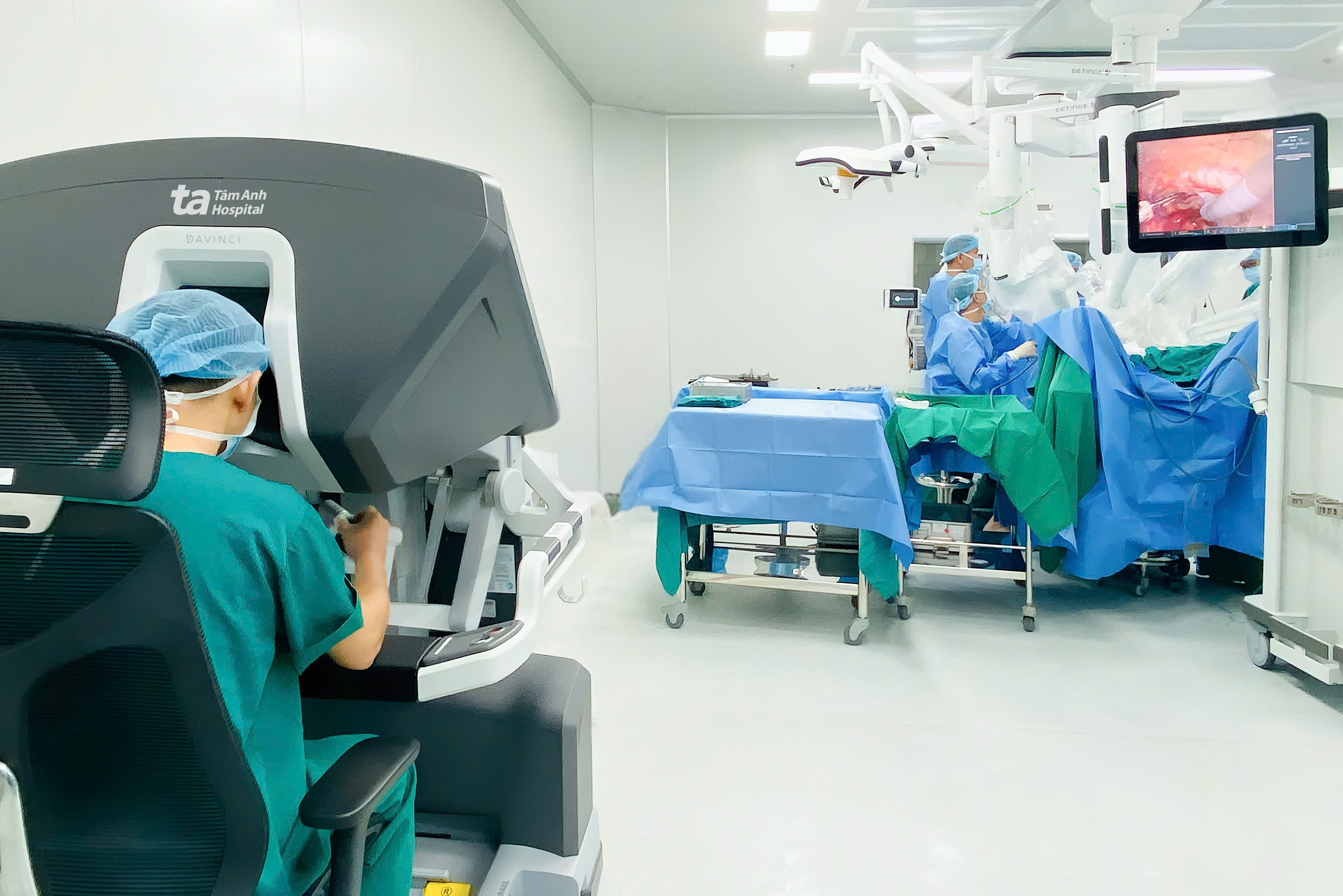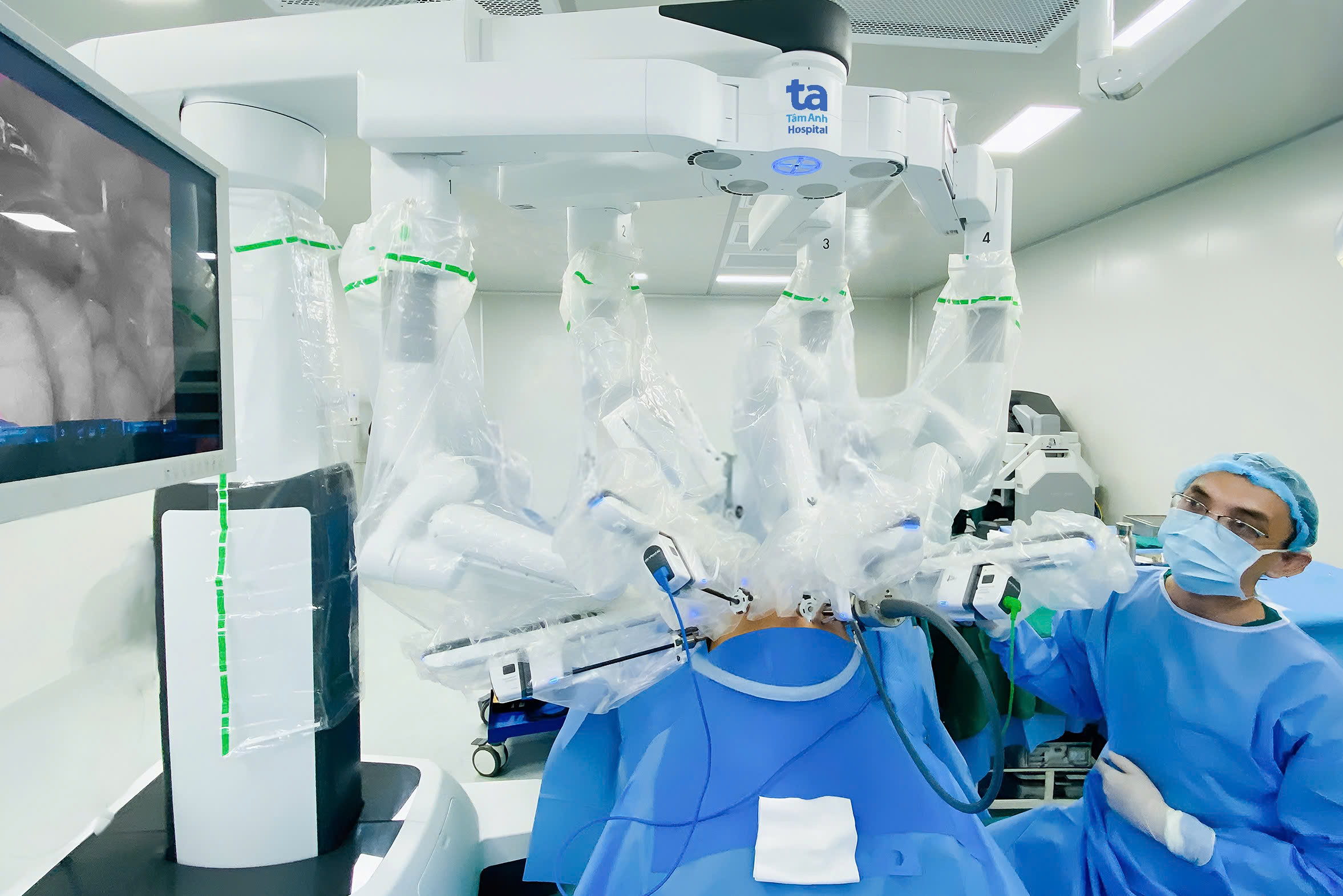Last year, tests at Tam Anh General Hospital in TP HCM revealed that Kien's prostate-specific antigen (PSA) level was 6.2 ng/mL, exceeding the normal range of below 4 ng/mL. Associate Professor Nguyen Tan Cuong, Deputy Head of the Urology Department, Urology - Nephrology - Andrology Center, discovered a hard nodule in Kien’s prostate. A 12-sample biopsy confirmed the presence of cancerous cells in the right lobe of the prostate.
Dr. Cuong recommended a radical prostatectomy or radiation therapy to eliminate the cancerous cells. However, Kien opted to postpone surgery, choosing instead to undergo check-ups every 3-6 months. "I thought I was still healthy and could have surgery when the disease became dangerous," Kien explained.
 |
Dr. Cuong (left) operating the Da Vinci Xi robot to perform a radical prostatectomy on Kien. Photo: Tam Anh General Hospital |
Dr. Cuong (left) operating the Da Vinci Xi robot to perform a radical prostatectomy on Kien. Photo: Tam Anh General Hospital
After 4 follow-up appointments over the course of a year, Kien’s PSA level had risen to 9.8 ng/mL, and the volume of his prostate had also increased, indicating the progression of the cancer. According to Dr. Cuong, a PSA level exceeding 10 ng/mL increases the risk of the cancer spreading beyond the prostate capsule and to the lymph nodes.
This time, Kien agreed to undergo a robotic-assisted laparoscopic radical prostatectomy using the Da Vinci Xi surgical system. Dr. Cuong controlled the robotic arms to remove the entire prostate and seminal vesicles while preserving the erectile nerves. Fortunately, the cancer had not yet spread to the lymph nodes or surrounding areas.
Three days after the surgery, Kien was discharged and scheduled for regular follow-up appointments to monitor for complications and prevent recurrence. A patient's PSA level should drop to near zero after surgery, indicating complete removal of the cancerous cells.
 |
Kien's prostate surgery using the Da Vinci Xi robot. Photo: Tam Anh General Hospital |
Kien's prostate surgery using the Da Vinci Xi robot. Photo: Tam Anh General Hospital
Prostate cancer ranks as the 4th most common cancer, with an estimated 1.4 million new cases globally in 2022, according to Globocan. Risk factors include being male and over 50, having a family history of prostate cancer, obesity, and exposure to hazardous chemicals.
In its early stages, prostate cancer is often asymptomatic. As the disease progresses, symptoms such as urinary problems, blood in the urine, erectile dysfunction, and pain in the lower back or pelvic area may appear. According to Dr. Cuong, the 5-year survival rate for early-stage prostate cancer is over 99% with timely treatment. However, this rate drops to 34% for advanced or metastatic stages.
Men over 50 (or 45 with a family history) should undergo regular prostate cancer screenings for early detection and treatment, which significantly improves the chances of recovery.
Ha Thanh
*The patient's name has been changed.
| Readers can submit questions about urological diseases here for answers from doctors. |












